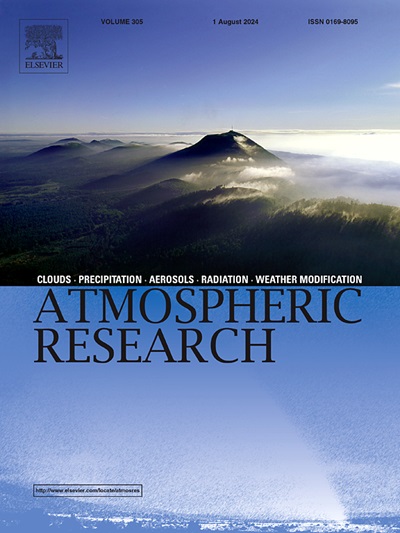Combining machine learning to explore the influence of VOCs and meteorological factors on ozone concentration: A case study of a chemical park in Shenyang, China
IF 4.5
2区 地球科学
Q1 METEOROLOGY & ATMOSPHERIC SCIENCES
引用次数: 0
Abstract
Ozone () pollution is a pervasive air quality issue, with volatile organic compounds (VOCs) significantly contributing to formation. Utilizing continuous online monitoring data from a chemical park in Shenyang in 2019, we analyzed variations in VOCs, conventional pollutants, and meteorological conditions, preliminarily determining their apparent effects on . Results indicated an “M”-shaped monthly average ozone variation, with peaks in summer and troughs in winter, influenced by photochemical reactions and meteorological factors. The daily mean concentrations of alkanes, alkynes, and aromatic hydrocarbons in VOCs displayed clear periodicity, with peaks occurring at 5:00–7:00 and 19:00–20:00, and troughs at 14:00–15:00. The monthly mean concentrations exhibited seasonal trends, with higher levels in fall and winter, and lower levels in spring and summer, demonstrating a pattern opposite to that of . Using machine learning techniques, we modeled the relationship between key factors and concentration. The results revealed that the optimized Extreme Gradient Boosting (XGBoost) model achieved the highest correlation coefficient and demonstrated the best performance. Using the feature importance method, we identified the key factors most strongly associated with concentration. The optimized model was then employed to examine the variation in concentration across different temperature and humidity conditions. This study provides essential insights for developing effective pollution control strategies and guiding environmental management decisions.

结合机器学习探索VOCs与气象因子对臭氧浓度的影响——以沈阳某化工园区为例
臭氧(O3)污染是一个普遍存在的空气质量问题,挥发性有机化合物(VOCs)对O3的形成起着重要作用。利用沈阳某化工园区2019年连续在线监测数据,分析了VOCs、常规污染物和气象条件的变化,初步确定了它们对O3的明显影响。结果表明,臭氧月平均变化受光化学反应和气象因素的影响,呈夏峰冬谷的“M”型变化。VOCs中烷烃、炔烃和芳烃的日平均浓度具有明显的周期性,峰值出现在5:00-7:00和19:00-20:00,低谷出现在14:00-15:00。月平均浓度呈现出秋冬高、春夏低的季节变化趋势,与O3相反。利用机器学习技术,我们建立了关键因素与O3浓度之间的关系模型。结果表明,优化后的极限梯度增强(XGBoost)模型相关系数最高,性能最佳。利用特征重要性方法,我们确定了与O3浓度关系最密切的关键因素。利用优化后的模型研究了不同温度和湿度条件下臭氧浓度的变化。该研究为制定有效的污染控制策略和指导环境管理决策提供了重要的见解。
本文章由计算机程序翻译,如有差异,请以英文原文为准。
求助全文
约1分钟内获得全文
求助全文
来源期刊

Atmospheric Research
地学-气象与大气科学
CiteScore
9.40
自引率
10.90%
发文量
460
审稿时长
47 days
期刊介绍:
The journal publishes scientific papers (research papers, review articles, letters and notes) dealing with the part of the atmosphere where meteorological events occur. Attention is given to all processes extending from the earth surface to the tropopause, but special emphasis continues to be devoted to the physics of clouds, mesoscale meteorology and air pollution, i.e. atmospheric aerosols; microphysical processes; cloud dynamics and thermodynamics; numerical simulation, climatology, climate change and weather modification.
 求助内容:
求助内容: 应助结果提醒方式:
应助结果提醒方式:


